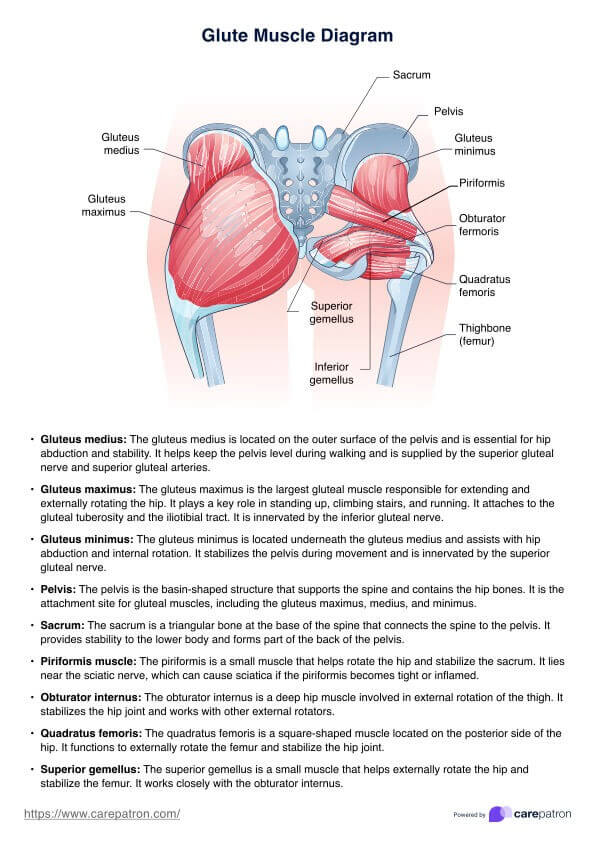Exercises like squats, lunges, and hip thrusts are some of the most effective movements for targeting the gluteal muscles, specifically the gluteus maximus and medius.

Glute Muscle Diagram
Download our user-friendly Glute Muscle Diagram to help patients visualize their glute muscles and understand their role in overall health and fitness.
Use Template
Glute Muscle Diagram Template
Commonly asked questions
Weak glutes can manifest as poor posture, lower back pain, or knee pain, and you may experience difficulty with single-leg activities like running or balancing.
Glute muscle pain may feel like a dull ache or sharp discomfort, particularly during activities involving hip movement, such as walking, sitting, or climbing stairs.
EHR and practice management software
Get started for free
*No credit card required
Free
$0/usd
Unlimited clients
Telehealth
1GB of storage
Client portal text
Automated billing and online payments











